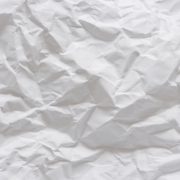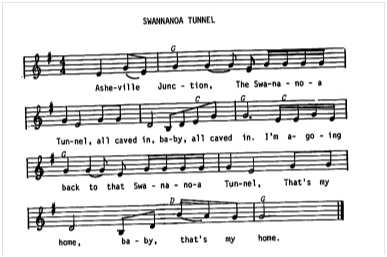MFA Program Director Debra Allbery’s opening remarks from the summer 2012 residency:
[The talk opens with the first two verses of “Swannanoa Tunnel,” as performed by Bascom Lamar Lunsford. A sample is available here.]
Provenance
“Swannanoa Tunnel,” also known as “Asheville Junction,” has a mixed ancestry: the local grafted onto the mythic. Cecil Sharp, a British folksong collector, documented it when he traveled through Buncombe and Madison counties in 1916-18. The isolation of these mountains made the area a rich repository of songs handed down from English and Scots-Irish ancestors—indeed, Sharp initially thought he’d happened upon a lost tribe of Elizabethans—and so he believed the song was an old English tune, mishearing the western North Carolina accent and transcribing Tunnel as Town-O, and hoot-owl as hoodow. But it was, of course, a work song, a collaborative and communal blues ballad—a John Henry variant with new verses layered onto its nine-pound hammer base, composed by the convict labor that spent two years digging the Swannanoa Tunnel in the late 1870s. At 1822 feet, this tunnel was the longest of seven struck by hand through these mountains to connect Asheville by railway with the outside world. Between 150 and 300 men died in the process; it’s thought that the particular cave-in referred to in the song happened in 1879, when 27 of the workers were killed.
Bascom Lamar Lunsford was a teacher, a country lawyer, a seller of fruit trees, a festival impresario, and ballad collector with a prodigious memory. He was born in 1882 near Turkey Creek, NC –what is now Leicester, just north of Asheville, and as a young man he traveled around western North Carolina, and later into Tennessee, Kentucky, and West Virginia, gathering the old ballads and their attendant stories. In 1949 the Library of Congress brought him to Washington to record over 300 songs and his stories of their provenance from his “Memory Collection”—the largest single collection drawn from any individual for their American folksong archive.



